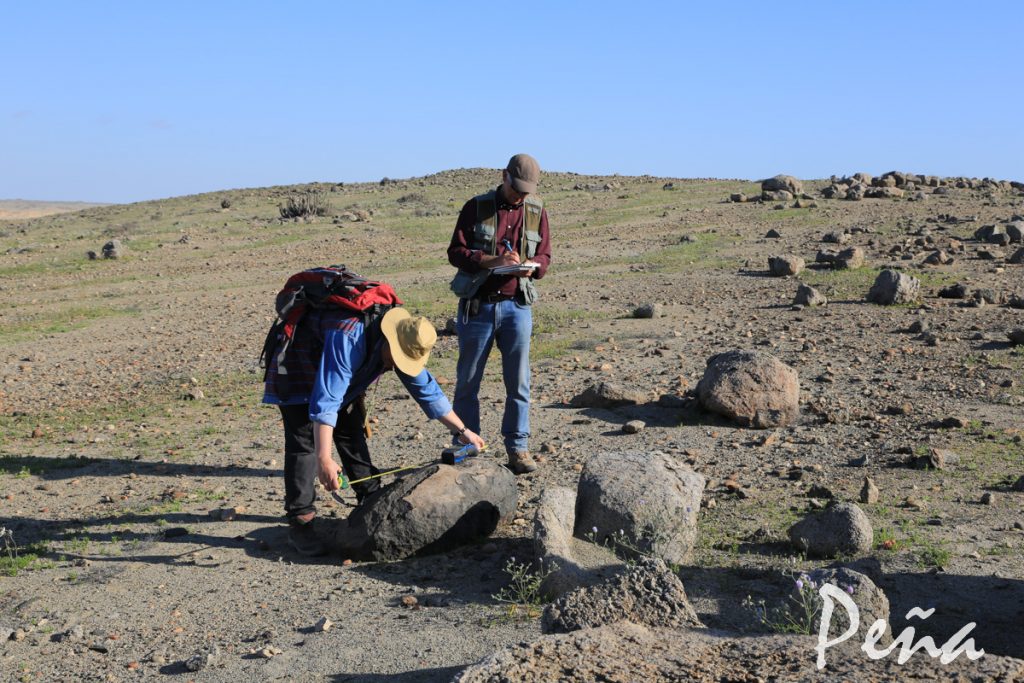Paleotsunami evidence in the Bahia Inglesa coast (Atacama, Chile) based a multi-approach analysis.
Carballeira, R, Peña-Monné, J.L., Otero, X.L., Sampietro-Vattuone, M.M., Castro-Correa, C.P., Soto-Bauerle, M.V., Pérez-Alberti, A., 2022. Paleotsunami evidence in the Bahia Inglesa coast (Atacama, Chile) based a multi-approach analysis. Environmental Earth Sciences, 81: 153, 2-16. |

ABSTRACT.
The Atacama coast is located in an area with a current high risk of tsunami, and the sedimentary deposits found in the Bahía Inglesa area, in the Morro sector, clearly indicate that this was also the case in the past. This investigation analyzes a paleotsunami sedimentary deposit consisting of a block field associated with three sand lobes oriented towards land on top of a marine terrace at an altitude of 70–75 m, which originated from a tsunamigenic event occurred between interglacial periods MIS 7 (ca. 210 ± 10 ky) and MIS5e (ca. 125 ± 5 ky). The deposits have been studied using a multiple approach combining geomorphological, sedimentological, biological, and geochemical criteria. The first type of criteria clearly indicate that the energy required to move the blocks and form the sand lobes could only have been generated by a tsunami. Sedimentological criteria constitute direct evidences of a marine origin due to the presence of siliceous remains from diatom species and spicules from strictly marine sponges, while geochemical criteria, such as the stable isotope signature and chemical composition, constitute evidence of a marine intrusion.



